NCERT Questions from PRADEEP PHYSICS Chapter 8 PROPERTIES OF BULK MATTER for Class 11
| Class 11 | PHYSICS |
| Chapter | PROPERTIES OF BULK MATTER |
| PRADEEP PHYSICS | NCERT Questions |
| Medium | English |
| Academic Year | 2023-2024 |
Question 5
Two wires of diameter 0.25 cm, one made of steel and the other made of brass are loaded as shown in figure. The unloaded length of steel wire is 1.5 m and that of brass wire is 1.0 m. Compute the elongations of the steel and the brass wires .Young's modulus of steel is 2.0×1011Pa and that of brass is 9.1×1011 Pa.
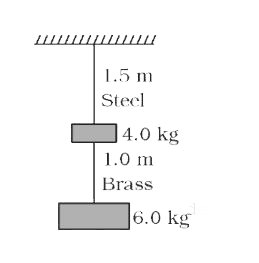 View Solution
View SolutionQuestion 7
Four identical hollow cylindrical cloumns of steel support a big structure of mass 50.000 kg. the inner and outer radii of each column are 30 cm and 60 cm respectively. Assume the load distribution to be uniform , calculate the compressional strain of each column. the Young's modulus of steel is 2.0×1011Pa.View SolutionQuestion 10
A rigid bar of mass 15 kg is supported symmetrically by three wires each 2 m long. Those at each end aer of copper and middle one is of iron. Determine the ratio of their diameters if each is to have the same tensoin. Young's modulus of elasticity for copper and steel are 110×109Nm−2 and 190×109Nm−2 respectively. View SolutionQuestion 11
A 14.5 kg mass, fastened to the end of a steel wire of unstretched length 1m, is whirled in a vertical circle with an angular velocity of 2rev./s at the bottom of the circle. The cross-sectional area of the wire is 0.065cm2 . Calculate the elongation of the wire when the mass is at the lowest point of its path Ysteel=2×1011Nm−2.View SolutionQuestion 12
Compute the bulk modulus of water from the following data : initial volume = 100.0 litre, pressure increase = 100.0 atmosphere. Final volume - 100.5 litre . (1 atmosphere = 1.013×105Pa). Compare the ulk modulus of water that of air (at constant temperature). explain in simple terms why the ratio is so large. View SolutionQuestion 17
Anvils made of single crystal of diamond , with shape as shown in fig. are used to investigate behaviour of materials under very high pressure. Flat faces at the narrow end of the anvil have a diameter of 0.5 mm, and the wide ends are subjected to a compressional force of 50,000 N. What is the pressure at the tip of the anvil?
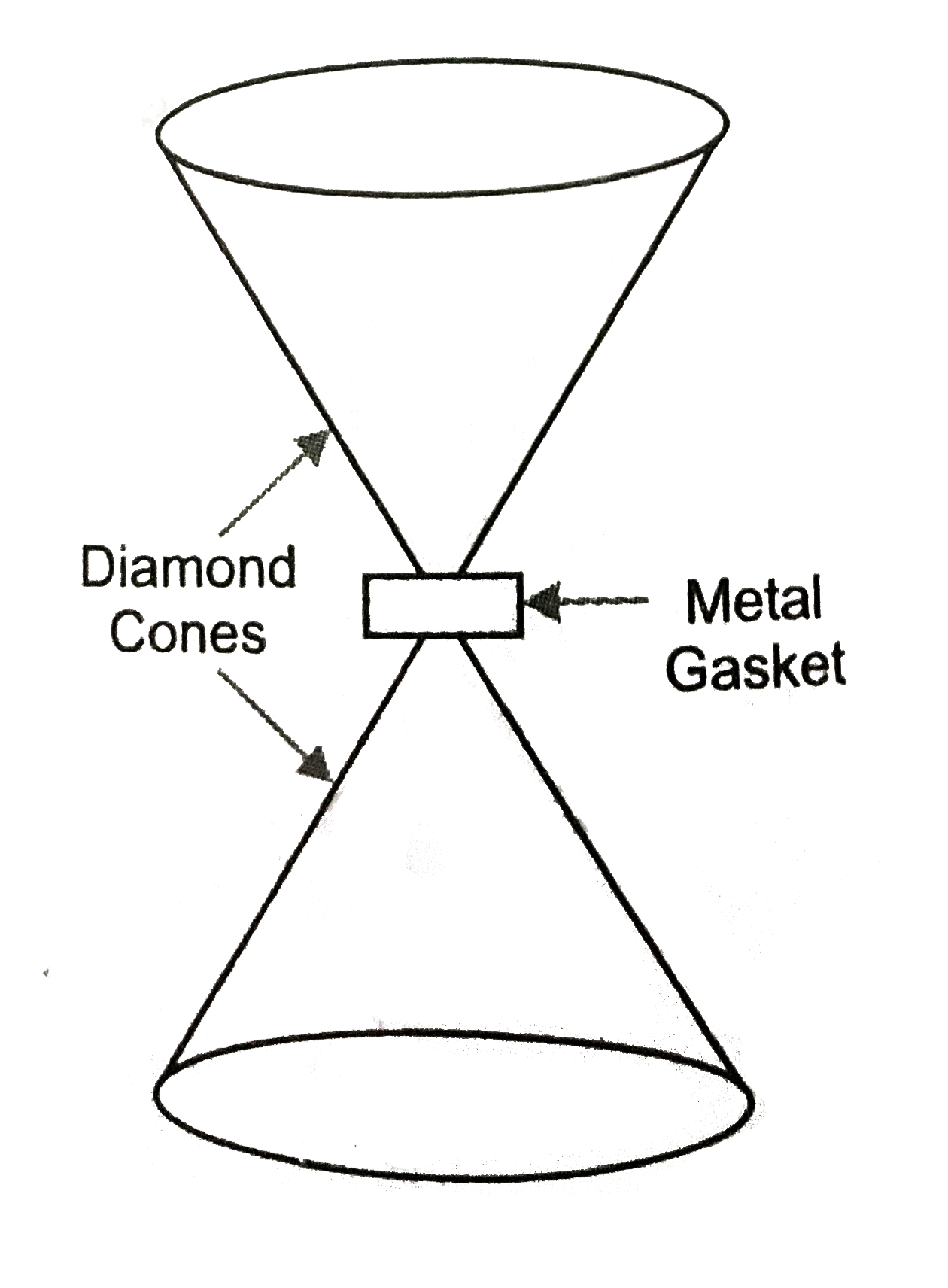 View Solution
View SolutionQuestion 18
A rod of length 1.05 m having negliaible mass is supported at its ends by two wires of steel (wire A) and aluminium (wire B) of equal lengths as shown in fig. The cross-sectional area of wire A and B are 1mm2 and 2mm2, respectively . At what point along the rod should a mass m be suspended in order to produce (a) equal stresses and (b) equal strains in both steel and aluminium wires. Given,
Ysteel=2×1011Nm−2andY−(aluminium)=7.0×1010N−2
 View Solution
View SolutionQuestion 19
A mild steel wire of length 1.0 m and cross-sectional are 0.5×10−20cm2 is streached, well within its elastic limit, horizontally between two pillars. A mass of 100 g is suspended from the mid point of the wire, calculate the depression at the mid point.
g=10ms−2,Y=2×1011Nm−2.
 View Solution
View SolutionQuestion 20
Two strips of metal are riveted together at their ends by four rivets, each of diameter 6mm. What is the maximum tension that can be exterted by the riveted strip if the shearing stress on the rivet is not to exceed 6.9×107Pa? Assume that each rivet is to carry one quarter of the load .View SolutionQuestion 21
The marina Trench is located in the pacific ocean, and at one place it is nearly eleven km beneath the surface of water. The water pressure at the bottom of the Trench is about 1.1×108Pa. A steel ball of initial volume 0.32m3 is dropped into the ocean and falls to the bottom of the Trench. what is the change in the volume of the ball when it reaches to the bottom? Bulk modulus for steel =1.6×1011Nm−2.View SolutionQuestion 22
Explain why (a) the blood pressure is humans is greater at the feet than at the brain.
(b) Atmospheric pressure at a height of about 6 km decreases to nearly half its value at the sea level through the 'height' of the atmospheric is more than 100 km.
(c) Hydrostatic pressure is a scalar quantity even though pressure is force divded by area , and force is a vector. View SolutionQuestion 23
Explain why
(a). The angle of contact of mercury with galss is obtuse, while that of water with glass is acute.
(b). Water on a clean glass surface tends to spread out while mercury on the same surface tends to form drops. (Put differently, water wets glass while mercury does not).
(c). Surface tension of a liquid is independent of the area of the surface
(d). Water with detergent disolved in it should have small angles of contact.
(e). A drop of liquid under no external forces is always spherical in shape.View SolutionQuestion 24
Find in the blanks using the word (s) from the test appended with each statement.
(a) Surface tension of liquid generally …..with temperatures (increase//decreases).
(b) Viscosity of gases ….. With temperature, whereas viscosity of liquids ……with temperature. (increases//decreases)/
(c) For solids with elastic modulus of rigidity, the shearing force is proportional to .....while for fluids it is proportional to ....(shear strain//rate of shear strain).
(d) For a dluid in a steady flow, from .....(conservation of mass// Bernoulli's principle)
(e ) For the model of a plane in a wind tunnel, turbulence oc curs at a ...... speed for turbulence for an actual plane (greater//smaller)/View SolutionQuestion 25
Explain why
(a). To keep a piece of paper horizontal, you should blow over, not under, it
(b). When w try to close a water tap with our fingers, fast jets of water gush through the openings between our fingers
(c). The size of the needle of a syringe controls flow rate better than the thumb pressure exerted by a doctor while administering an injection
(d). A fluid flowing out of a small hole in a vessel results in a backward thrust on the vessel
(e). A spinning cricket ball in air does not follow a parabolic trajectory.View SolutionQuestion 34
Glycerine flows steadily through a horizontal tube of length 1.5m and radius 1.0 cm. if the amount of glycerine collected per second at one end is 4.0×10−3kgs−1, what is the pressuer difference between the two ends of the tube? (density of glycerine = 1.3×103kgm−3 and viscosity of glycerine =0.83Nsm−2).View SolutionQuestion 41
What is the excess pressure inside a bubble of soap solution of radius 5.00mm, given that the surface tension of soap solution at the temperature (20∘C) is 2.50×10−2Nm−1? If an air bubble of the same dimension were formed at a depth of 40.0 cm inside a container containing the soap solution (of relative density 1.20), what would be the pressure inside the bubble? (1atm. is 1.01 xx 10^(5)Pa).View SolutionQuestion 42
A tank with a square base of area 1.0m2 is divided by a vertical parition in the middle. The bottom of the partition has a small hinged door of area 20cm2. The tank is filled with water and an acid (of relative density 1.7) in the other, both to a height of 4.0m. Compute to force necessary the force nec cessary to keep the door closed.View SolutionQuestion 43
A manometer reads the pressure of a gas in an encloure as shown in fig. when some of the gas is removed by the pump, the manometer reads as in fig. the liquid used in mano-meters is mercury and the atmospheric pressure is 76 cm of mercury.
(i) Given the absolute and gauge pressure of the gas in the two cases (in units of cm. of mercury).
(ii) How would the levels change in case(b) if 13.6cm of water are poured into the right limb of manometer? (Ignore the change in volume of the gas).
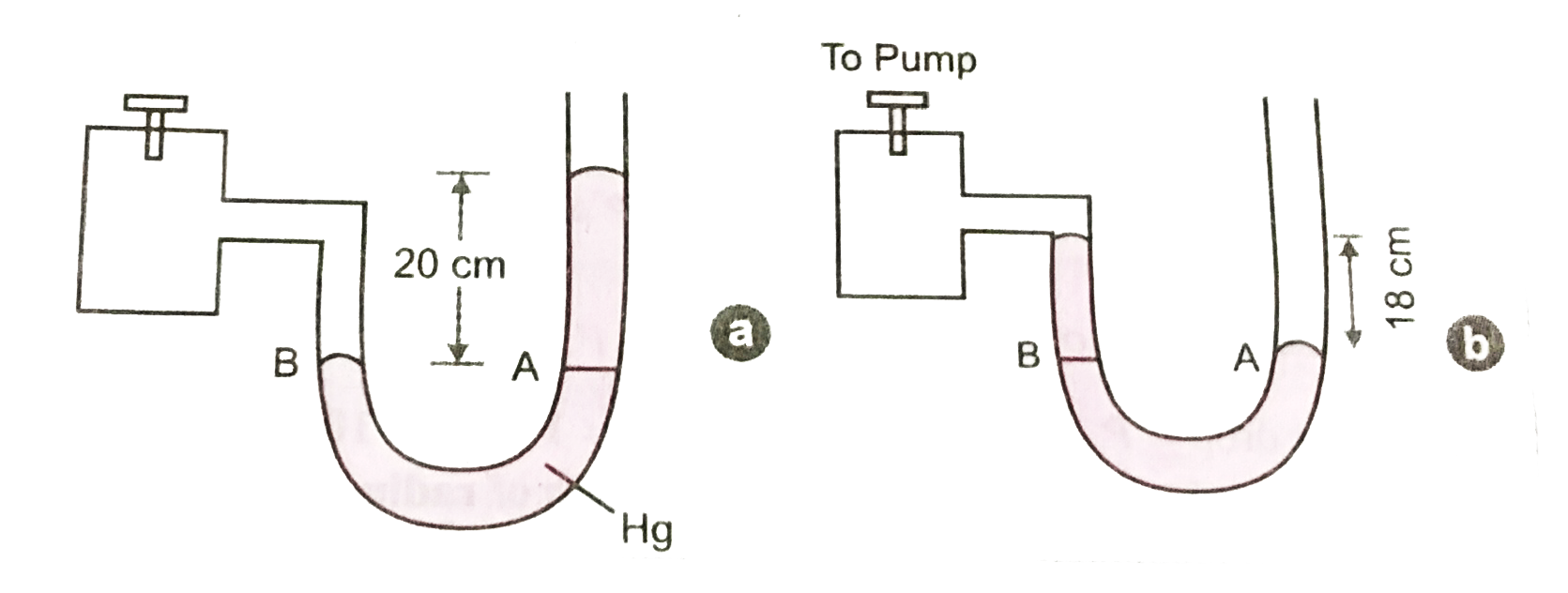 View Solution
View SolutionQuestion 44
Two vessels have the same base area but differnent shapes. The first vessel takes twice the vloume of water that the second vessel requires to fill up to a paricular common height . Is the force exerted by water on the base of the vessel the same in the two case? If so, why do the vessels filled with water to that same height give different reading on a weighting scale ?View SolutionQuestion 46
In deriving Bernoulli's equation , we equated the workdone on the fluid in the tube to its change in the potential and kinetic energy (a) How does the pressure change as the fluid moves along the tube if dissipative forces are present ? (b) Do the dissipative forces becomes more important as the fluid velocity increase? Discuss qualitatively. View SolutionQuestion 49
In Millikan's oil experiment, what is the terminal speed of a speed of a drop of radius 2.0×105m and density 1.2×103m−3? Take the viscosity of air at the temperature of the expermental to be 1.8×10−5Nsm2. How much is the viscous force on the drop at that speed? Neglect buoyancy of the drop due to air. View SolutionQuestion 50
Mercury has an angle of contact equal to 140∘ with soda lime galss. A narrow tube of radius 1.00mm made of this glass is dipped in a through containing mercury. By what amount does the mercury dip down in the tube relative to the mercury surface outside? Surface tension of mercury at the temperature of the experiment is 0.465Nm−1. Density of mercury = 13.6×103kgm−3.View SolutionQuestion 51
Two narrow bores of diameters 3.0mm and 6.0 mm are joined together to form a U-shaped tube open at both ends. If th U-tube contains water, what is the difference in its levels in the two limbs of the tube? Surface tension of water at the temperature of the experiment is 7.3×10−2Nm−1. Take the angle of contact to be zero. and density of water to be 1.0×103kg/m3.
(g=9.8ms−2)View SolutionQuestion 52
(a). It is known that density ρ of air decreases with height y as
ρ=ρ0e−y/y(_o) ltb rgt where po=1.25kgm−3 is the density at sea level, and yo is a constant. This density variation is called the law of atmospheres. Obtain this law assuming that the temperature of atmosphere remains a constant (isothermal conditions). Also assume that the value of g remains constant
(b). A large He balloon of volume 1425m3 is used to lift a payload of 400 kg. Assume that the balloon maintains constant radius as it rises. How high does it rise?
[take yo=8000mandρHe=0.18kgm−3]View SolutionQuestion 55
The electrical resistance in ohms of a certain thermometer varies with temperature ac cording to the approximate law: R=R0[1+α(T−T0)]
The resistances is 101.6Ω at the triple-point of water 273.16K, and 165.5Ω at the normal melting point of lead (600.5K). What is the temperature when the resistance is 123.4Ω? View SolutionQuestion 56
Answer the following :
(a) The triple-point of water is a standard fixed point in modern thermometry. Why ? What is wrong in taking the melting point of ice and the boiling point of water as standard fixed points (as was originally done in the Celsius scale) ?
(b) There were two fixed points in the original Celsius scale as mentioned above which were assigned the number 0∘C and 100∘C respectively. On the absolute scale, one of the fixed points is the triple-point of water, which on the Kelvin absolute scale is assigned the number 273.16 K. What is the other fixed point on this (Kelvin) scale ?
(c ) The absolute temperature (Kelvin scale) T is related to the temperature tc on the Celsius scale by
tc=T−273.15
Why do we have 273.15 in this relation, and not 273.16 ?
(d) What is the temperature of the triple-point of water on an absolute scale whose unit interval size is equal to that of the Fahrenheit scale ? View SolutionQuestion 57
Two ideal gas thermometer A and B use oxygen and hydrogen respectively . The following observations are made:
Temperature, Pressure therometer A, Pressure therometer B
Triple point of water, 1.250×105Pa, 0.200×105Pa
Normal melting point of sulphur, 1.797×105Pa, 0.287×105Pa
(a) What is the absolute temperature of normal melting point of sulphur as read by thermometers A and B ?
(b) What do you think is the reason for the slightly different answers from A and B ? (The thermometers are not faulty). what further procedure is needed in the experiment to reduce the discrepancy between the two readings. View SolutionQuestion 58
A steel tape 1m long is correctly calibrated for a temperature of 27∘C. The length of a steel rod measured by this tape is found to be 63.0cm on a hot day when the temperature is 45.0∘C. What is the acutual length of the steel rod on that day? what is the length of the same steel rod on a day when the temperature is 27.0∘C ? coefficient of linear expansion of steel =1.20×10−5.∘C−1.View SolutionQuestion 59
a large steel wheel is to be fitted on to a shaft of the same material. At 27∘C, the outer diameter of the shaft is 8.70cm and the diameter of the central hole in the wheel is 8.69cm . The shaft is cooled using 'dry ice' , At what temperature of the shaft does the wheel slip on the shaft? Assume coefficient of linear expansion of the steel to be constant over the required temperature range: αsteel=1.20×10(−5)K−1.View SolutionQuestion 61
A brass wire 1.8m long at 27∘C is held taut with little tension between two rigid supports. If the wire cooled to a temperature of −39∘C, what is the tension developed in the wire, if its diameter is 2.0mm? Coefficient of linear expansion of brass =2.0×10−5/∘C, Young's modulus of brass =0.91×1011Pa.View SolutionQuestion 62
A brass rod length 50 cm and diamteer 3.0 mm is joined to a steel rod of the same length and diameter. What is the change in length of the combined rod at 250∘C if the original length are at 40∘C ? Coefficient of linear expansion of brass and steel are 2.10×10−5.∘C−1 and 1.2×10−5^(∘)C−1 respectively.View SolutionQuestion 64
A 10kW drilling machine is used to drill a bore in a small aluminium block of mass 8.0kg. How much is the rise in temperature of the block in 2.5 minutes, assuming 50% of power is used up in heating the machine itself or lost to the surrounding? Specific heat of aluminium =0.91J/g∘C.View SolutionQuestion 67
Answer the following question beased on tbhe P-T phase diagram of carbon dioxide.
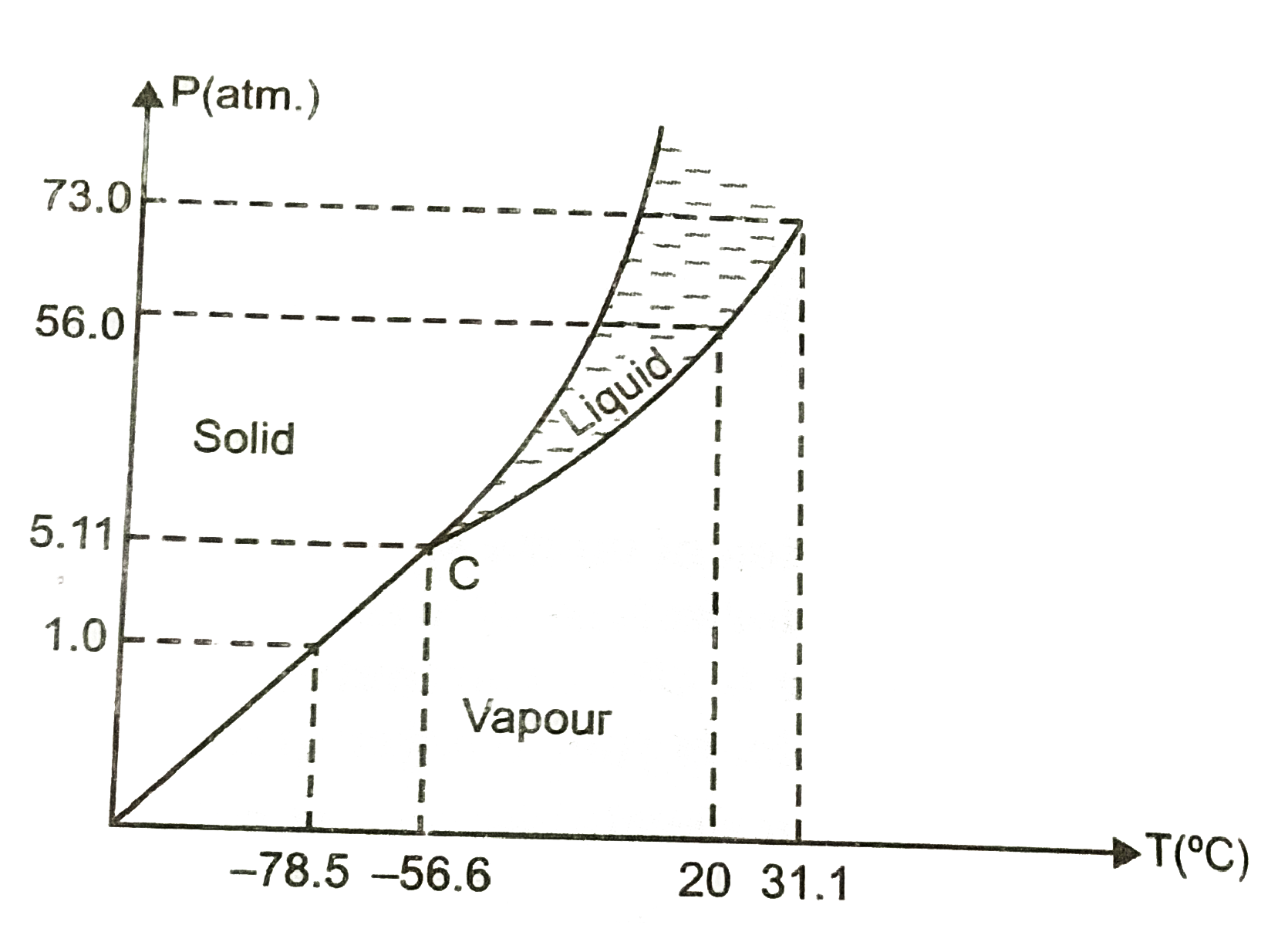
(a) At what temperature and pressure can the solid, liquid and vapour phases of CO2 co-exist is equilibrium ? (b) What is the effect of decrease of pressure on the fusion and bolling point of CO2 ? (c ) What are the critical temperature and pressure for CO2 ? What is their significane ? (d) Is CO2 solid, liquid or gas at (a) −70∘C under 1 atm, (b) −60∘C under 10 atm, (c) 15∘C under 56 atm ?View SolutionQuestion 68
Answer the following questions based on the P – T phase diagram of CO2:
(a) CO2 at 1 atm pressure and temperature–60∘C is compressed isothermally. Does it go through a liquid phase ?
(b) What happens when CO2 at 4 atm pressure is cooled from room temperature at constant pressure ?
(c) Describe qualitatively the changes in a given mass of solid CO2 at 10 atm pressure and temperature –65∘C as it is heated up to room temperature at constant pressure.
(d) CO2 is heated to a temperature 70∘C and compressed isothermally. What changes in its properties do you expect to observe ?View SolutionQuestion 69
A child running a temperature of 101F is given and antipyrin (i.e. a madicine that lowers fever) which cause an increase in the rate of evaporation of sweat from his body. If the fever is brought down to 98∘F in 20 min., what is the averatge rate of extra evaporation caused, by the drug ? Assume the evaporation mechanism to the only way by which heat is lost. The mass of the child is 30 kg. The specific heat of human body is approximately the same as that of water and latent heat of evaporation of water at that temperature is about 580cal.g−1.View SolutionQuestion 70
A cubical thermocol ice box of side length 30cm has thickess of 5.0cm If 4.0kg of ice is put in the box estimate the amount of ice remaining after 6hr The outside temperature is 45∘C and co-efficient of the thermal conductivity of the thermocol is 0.01Js−1m−1K1 (Latent Heat of fusion of water =335×103Jkg−1) .View SolutionQuestion 71
A brass boiler has a base area of 0.15m2 and thickness 1.0 cm it bolis water at the rate of 6.0 kg/min, when placed on a gas stove. Estimate the temperature of the part of the flame in contact with the bolier. Thermal conductivity of brass =609Js−1.∘C−1. Heat of vaporisation of water =2256×103Jg−1View SolutionQuestion 72
Explain why : (a) A body with large reflectivity is a poor emitter. (b) A brass tumbler feels much colder then a wooden tray on a chilly day. (c ) an optical pyrometer (for measuring high temperatures) calibrated for an ideal black body correct value for the temperature when the same piece is in the furnace. (d) The earth without its atmosphere would be inshospitably cold. (e ) Heating system based on circulation of steam are more effecient in warming a building than those based on circulation of hot water.View Solution
All Exercises from PRADEEP PHYSICS Class 11 PHYSICS PROPERTIES OF BULK MATTER
- Advanced problems for competitions
- Asseration - Reason Type Question
- Conceptual Problems
- Curiosity Questions
- Fill in the Blanks A
- Fill in the Blanks B
- Fill in the Blanks C
- Fill in the Blanks D
- Fill in the Blanks E
- Higher Order thinking skells
- Integer Type Questions
- Long Answer questions
- Multiple choice questions
- Multiple choice questions-I
- Multiple choice questions-II
- NCERT Questions
- Problmes for Practice
- Sample problem
- Short Answer Questions
- Solved Examples
- Test Your Grip A
- Test Your Grip C
- Test Your Grip D
- Test Your Grip E
- Test Your grip B
- Value Based Question
- Very short answer questions

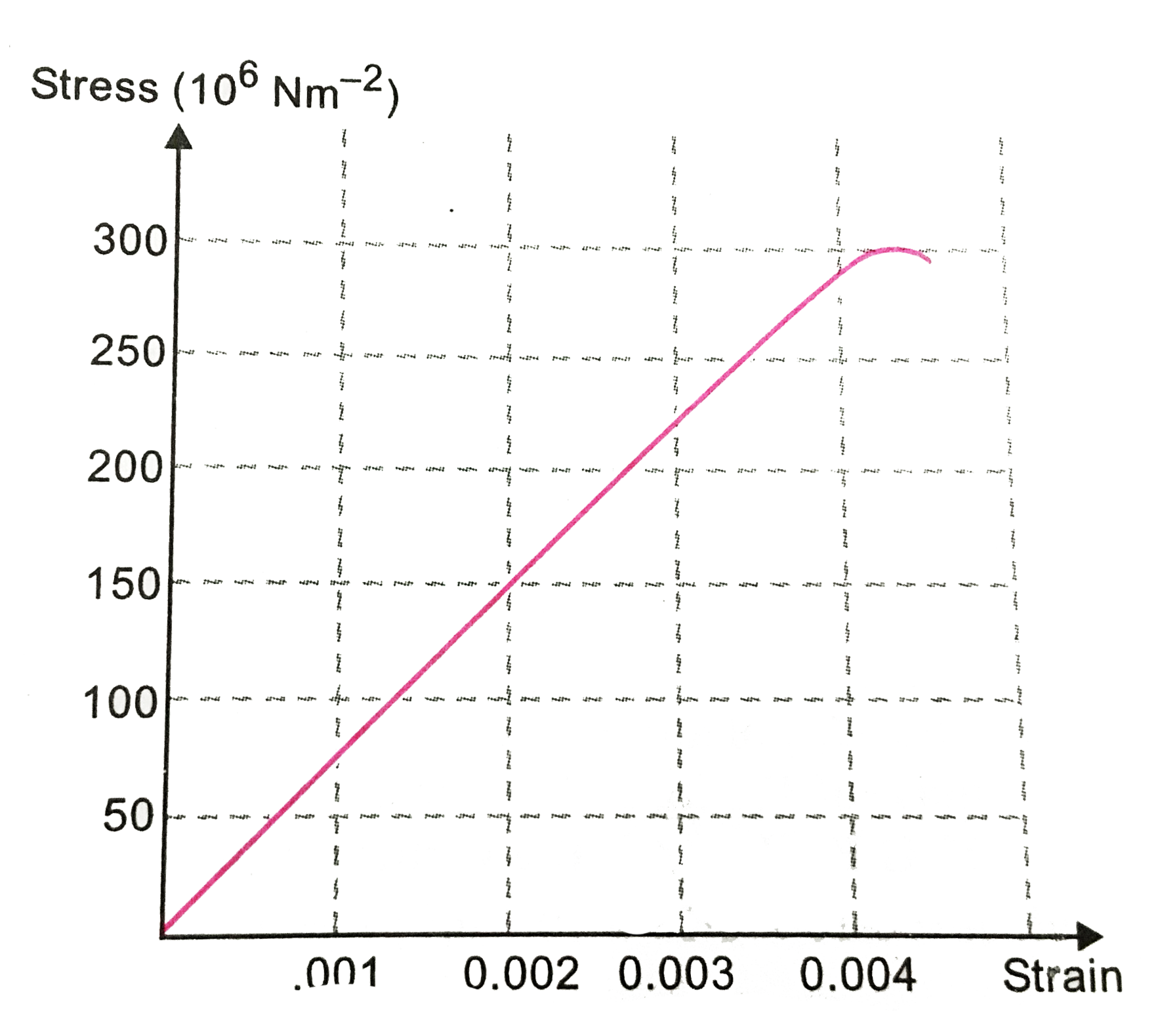
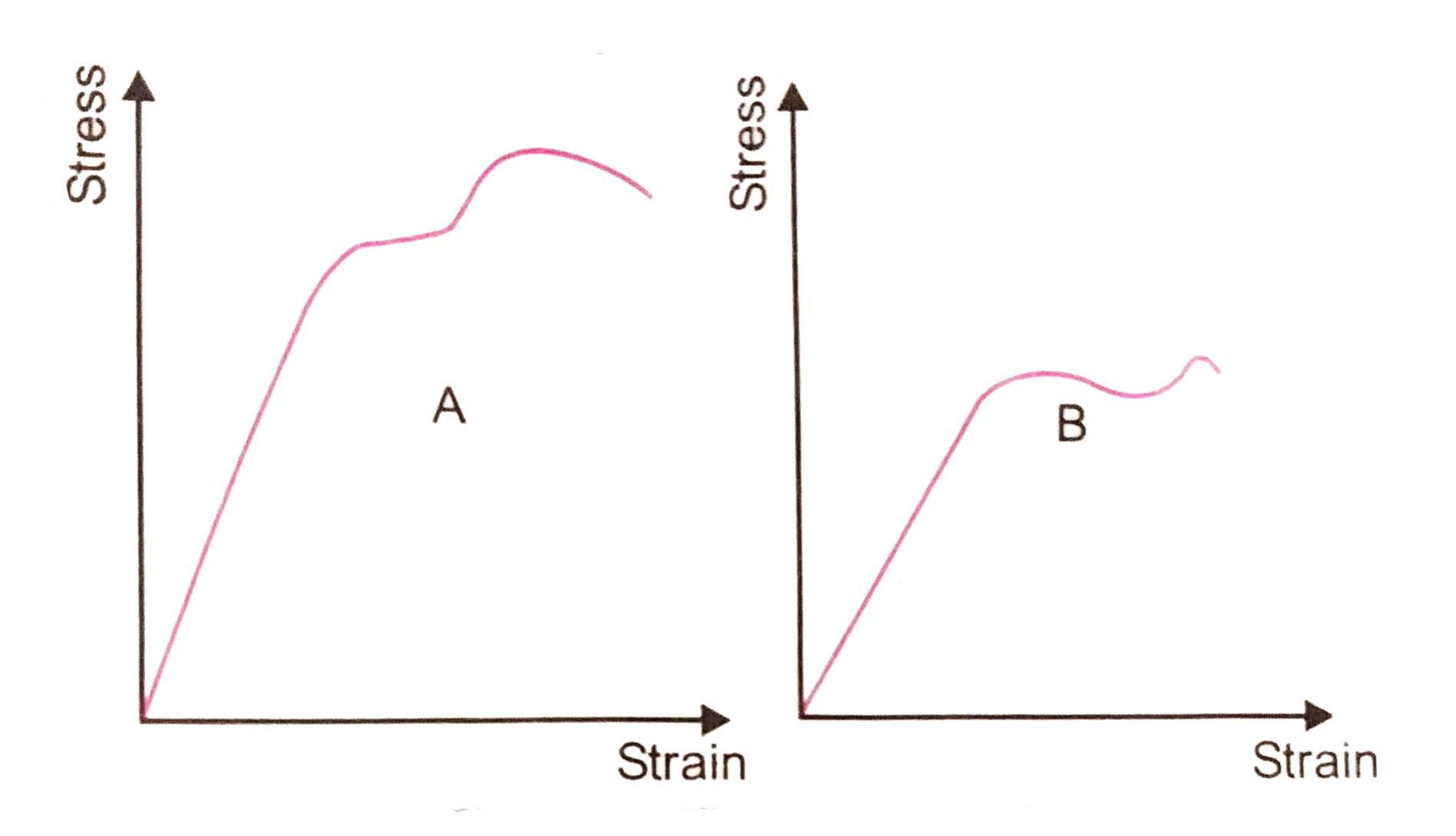
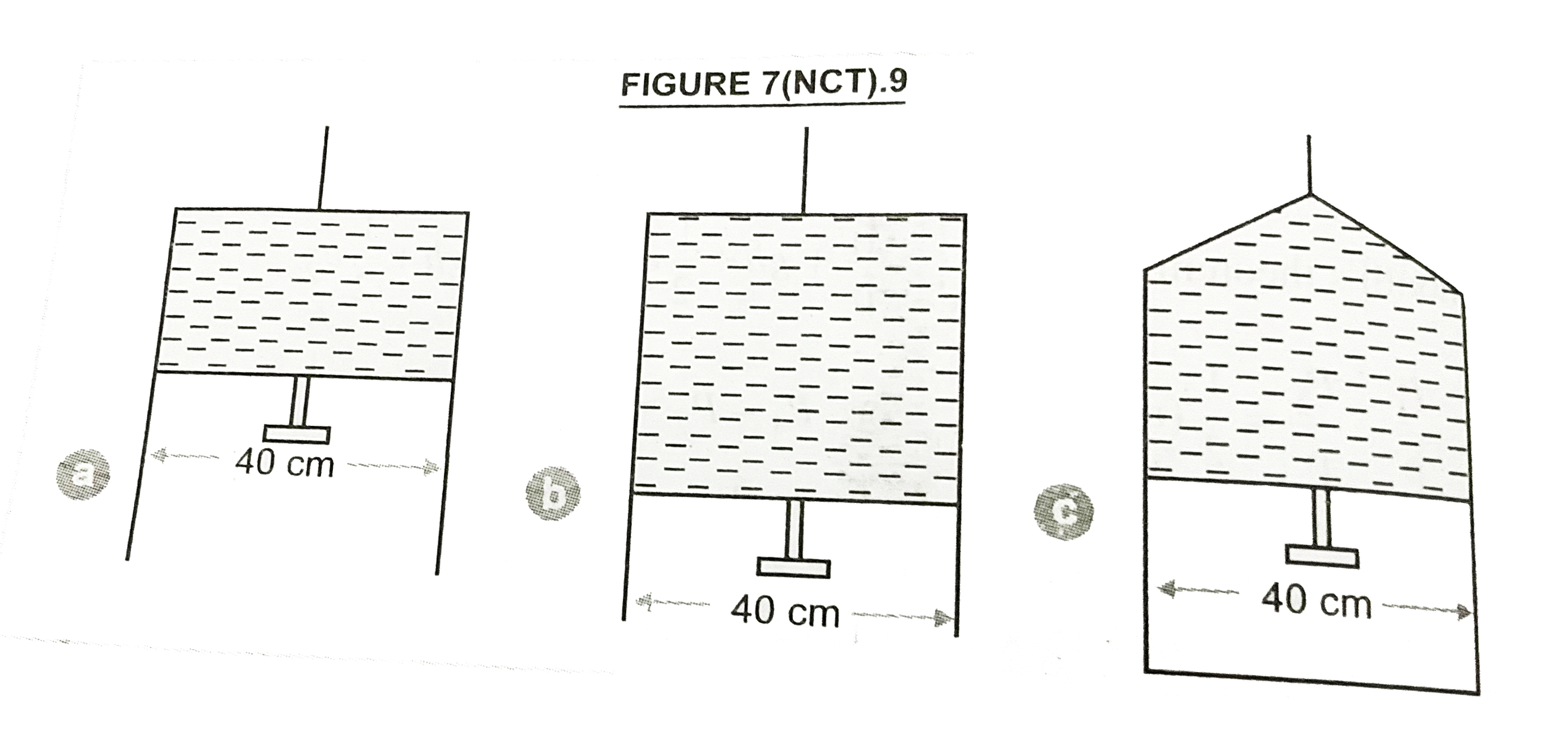 .
.